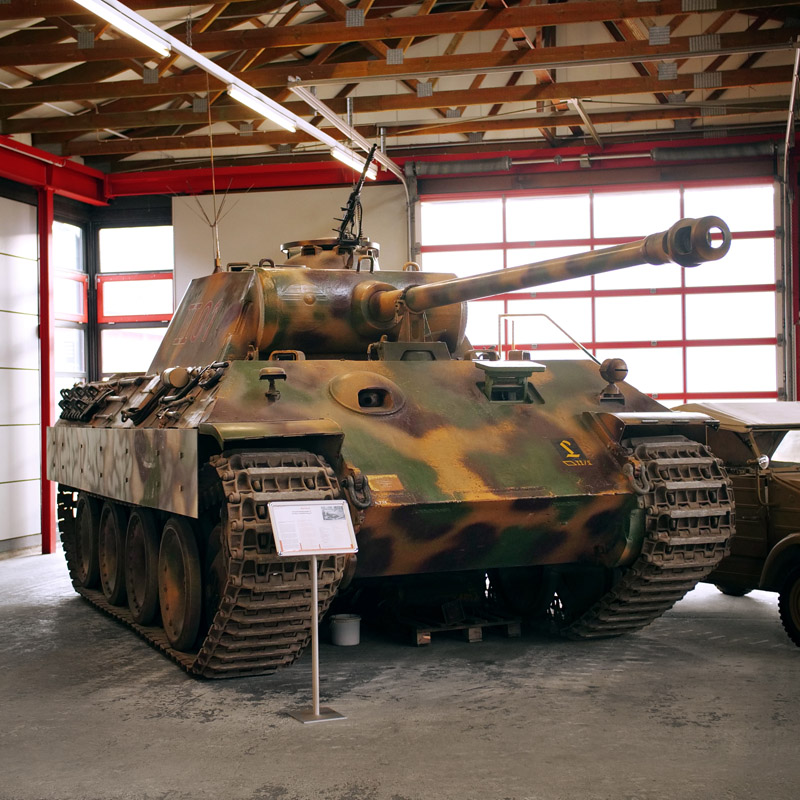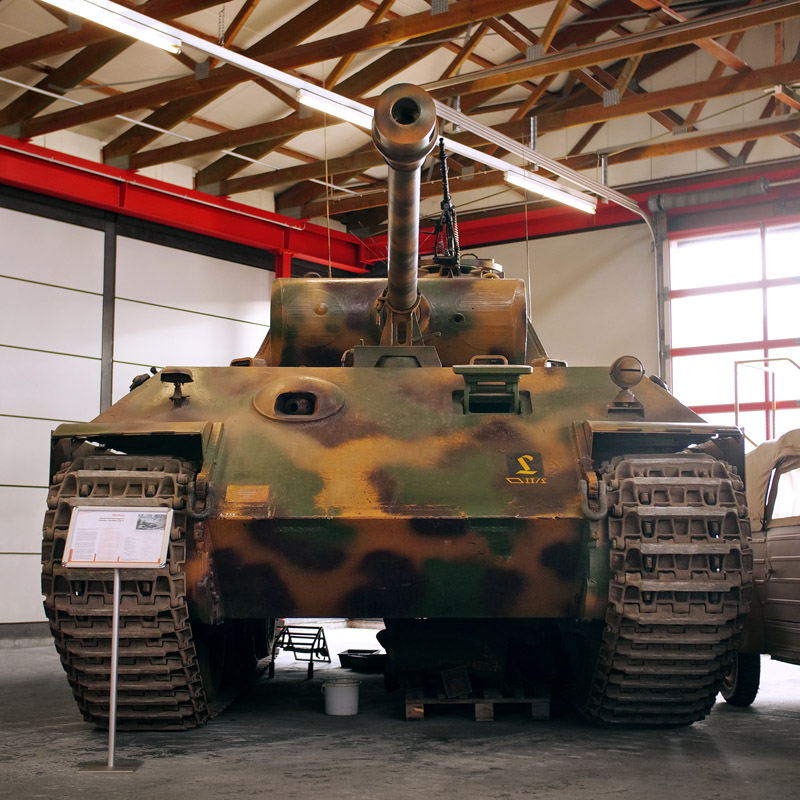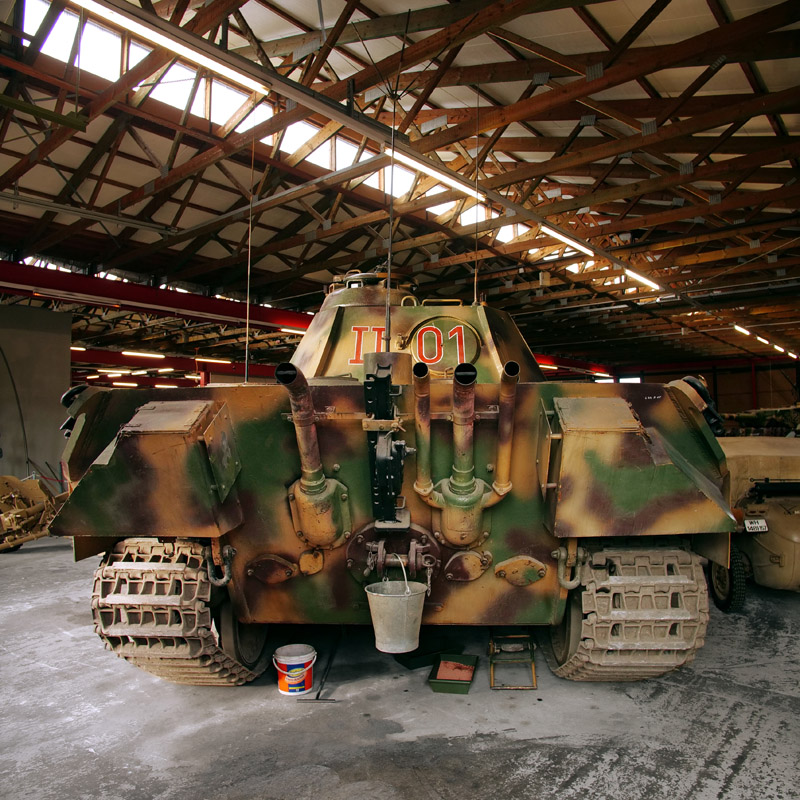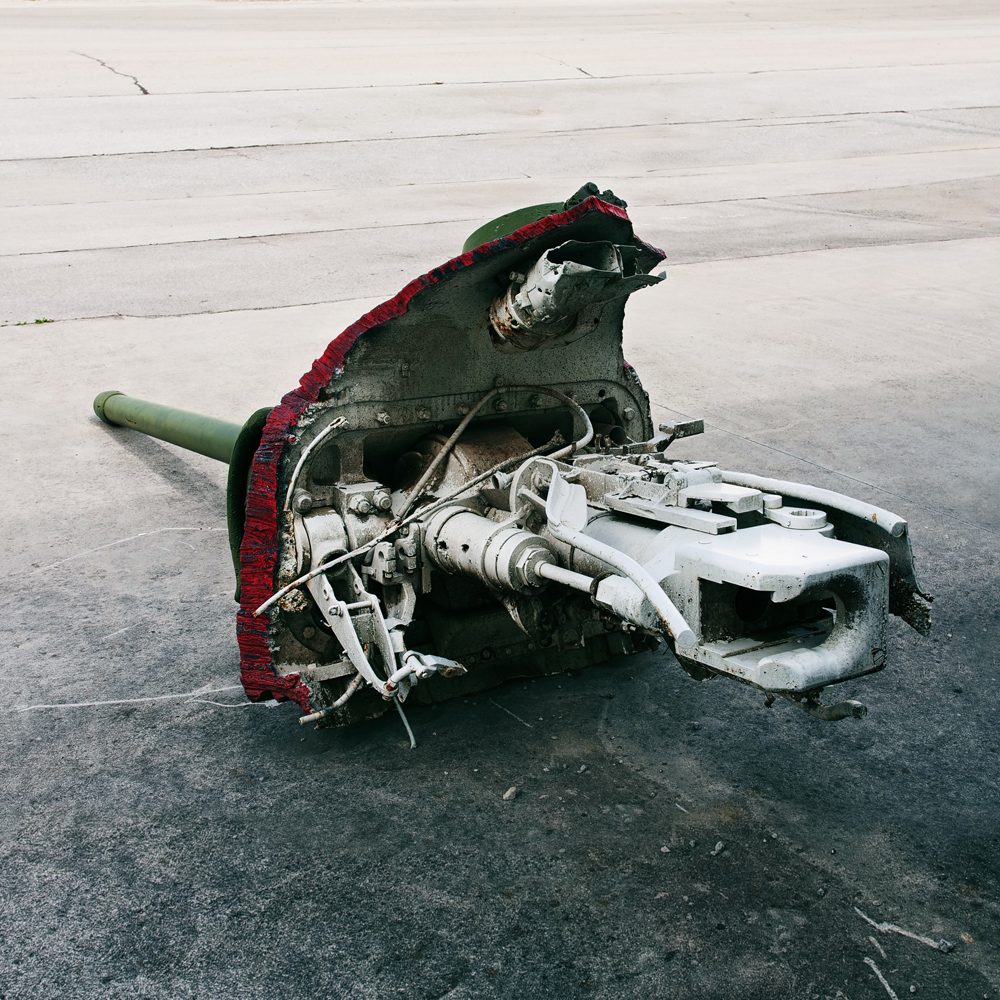Type: Medium Tank
Nation: Germany
Period: World War 2
Location: Deutsches Panzermuseum Munster, Germany

Complacent conquerors
The first predecessor of the Panther programme had been the VK 20 design series (Vollkette = fully tracked) which had been initiated in 1938. But since Nazi Germany seemed to be able to conquer large parts of Europe with their existing pre-war tank models, the VK 20 was not considered a priority. That all changed after the invasion of the Soviet Union in 1941, when the Germans realised that their vehicles were being outclassed by the Soviet T-34 and KV-1.
Many meetings
In late 1941 a competition for a new 30-ton medium tank led to the VK 30.01 (D) by Daimler-Benz and the VK 30.02 (M) by MAN. Both designs were evaluated by a committee called the „Pantherkommission“. The Daimler design was essentially a direct copy of the T-34 – including a small forward-mounted turret, a diesel engine and rear-sprocket drive. Only its suspension was very conservative, using leaf springs instead of the T-34‘s Christie system. MAN‘s proposal had a more modern (and more expensive) torsion bar suspension system with big interleaving road wheels, it was sharing the petrol engine with the Tiger and it made use of a centre-mounted Krupp turret which had been made readily available at the time. The turret was one of the main reasons why the committee, after a lot of disagreement, eventually approved the VK 30.02 (M) for series production in May 1942.

Constant changes
Besides MAN, three additional factories were ordered to build the Panther to maximise production output: Henschel in Kassel, Daimler-Benz in Berlin-Marienfelde and MNH in Hannover. There were three main Panther versions: Ausführung D, A and G – in that order. Confusing enough, the shift from one Ausführung to the next would happen gradually so that Ausf. Ds could still be in production at one factory while another plant had already switched to building the Ausf. A and so on. And to complicate things even more, some significant changes happened during production of every Ausführung – another result of the Panther‘s extremely rushed production schedule. For example, the early A vehicles would still have the bow gunner‘s letterbox vision port from the Ausf. D, but on later As this was replaced by a ball mount, which would then be standard on all Ausf. Gs. In January 1944 two additional pipes, which were supposed to help with engine cooling, were introduced on the Ausf. A’s left exhaust. Curiously, on this tank they are mounted on the right side.

A long journey
This particular vehicle is one of around 300 ”Befehlspanther” command tanks which can be identified by the two extra aerials on the turret and engine deck. To make room for the additional radios, the ammunition stowage for the 7.5 cm gun was reduced from 79 to 64 shells. Also, the coaxial machine gun was removed and the hole in the mantlet covered with a plug. This Panther was built in February 1944 and then sent to France, where it was captured by the French Army at some point. However, it is unclear what unit it was assigned to during the war. In 1946 the tank was sold to Sweden and in 1961 it was given to the Panzerlehrbattaillon 93 in Munster. From 1980 to 1981 it was carefully restored to running condition, but because the original petrol engine eventually decided to stop working for good, it was replaced by a Kanonenjagdpanzer’s MTU diesel in 1983. The vehicle can be seen in action at the Panzermuseum’s annual live event “Stahl auf der Heide”. The Roman „II“ on the turret stands for the second battalion in the regiment, the „01“ for the commander‘s or adjudant‘s vehicle.


2 responses to “Panzerkampfwagen V Befehlspanther Ausf. A (Sd.Kfz. 171)”
[…] and firepower. However, it was rushed into production and especially the early Ausf. D and Ausf. A vehicles suffered from many teething troubles – some of which the Germans would never be able to […]
LikeLike
[…] the Panther‘s Ausf. D, Ausf. A and Ausf. G production models, an upgraded Ausf. F with a completely redesigned „Schmalturm“ […]
LikeLike